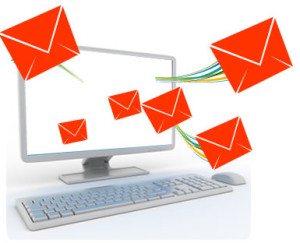 Keeping the subject of your e-mail letters engaging means there needs to be an element of freshness about them. You can do this by including current newsworthy events that are related to your niche. This demonstrates two things: first, that you can be relied upon to keep your audience informed of niche-related news; and second, you are updating your e-mail series. Nobody wants to stay on an e-mail list that appears to be written 10 years ago. The fresher the information the better, and for ideas on how to keep your e-mails fresh read on:
Keeping the subject of your e-mail letters engaging means there needs to be an element of freshness about them. You can do this by including current newsworthy events that are related to your niche. This demonstrates two things: first, that you can be relied upon to keep your audience informed of niche-related news; and second, you are updating your e-mail series. Nobody wants to stay on an e-mail list that appears to be written 10 years ago. The fresher the information the better, and for ideas on how to keep your e-mails fresh read on:
Forums Are The Place To Go
Contents
For those of you who are stuck for content ideas, and more specifically can’t come up with niche-related problems that need solving, then visit forums that are related to your niche. There are forums on virtually any topic out there. What’s great about forums in particular is that the information will be fresh. Users will post on topics that are relevant today, not a year ago, or even 6 months ago.
This means you can find out what problems your e-mail list should be tackling and address them. One of the best ways of keeping people subscribed to your e-mail list is by proving to them that you can solve their problems, or at the very least provides partial solutions at an on-going basis. An expert from Ivana Bosnjak suggests that the forums are a great place to research niche-related topics:
If you don’t know where to search for problems, just browse your niche relevant forums. You will see many problems, many! Shoot, you might find so many that you will not be able to solve them all.
Just make sure to find a forum that has many participating users. Some forums become dead after a while because there is a lack of activity. You need to avoid these because the information at these forums will be dated and not worth using in your e-mail series.
Top Blogs
Every niche or industry has top blogs that in effect act like a news channel for any important information that comes out. That means you don’t have to spend hours researching what’s newsworthy on the internet. You simply need to follow a few very carefully selected blogs and you’ll have as much newsworthy content for the e-mail list as you’ll ever need.
To find a top blog in your niche, simply enter a few search strings into Google such as “top blogs” followed by the name of your niche. You don’t need to follow as many as 10 blogs, but you shouldn’t follow just one either. Around 3-4 well selected blogs can be enough for a typical e-mail list. Of course, the amount of information you need depends on the frequency at which you send off your e-mails. However, as Lucy Langdon suggests, some niches might be so obscure that finding niche blogs could be difficult:
They’re not necessarily going to make it any ‘top x’ lists. As mentioned above, there are also a lot of blogs and although the best will usually make themselves known in one way or another, finding and assessing their value to you can still be a frustrating and time-consuming business.
Offline Research
You should keep in mind that you can research information for your e-mail series offline. This has the added advantage of providing you information that competitors in your niche might not uncover. That’s because most people will only stick to online research. By going the extra mile you are giving your subscribers something extra. They will reward that extra effort by staying on your e-mail list instead as opposed to switching to a competitor. The sources at which you can do offline research are news channels, libraries and experts. You can form partnerships with experts that can provide insights into your niche. For example, if you have an e-mail list about fishing then you could join a local fishing club and it might become an invaluable source of information.
Even if you are just an affiliate and have had no interest in fishing before you could try it out for yourself. Then you can provide content from experience as opposed to re-writing something which you might have read elsewhere.
Frequency of Sending E-Mails
You might think that the more e-mails you send the better, but in actual fact that might be counter-productive. From the content freshness standpoint the more often you send e-mails the harder it will be too keep content fresh. For example, if you send e-mails on a daily basis, but can only find 3 newsworthy events per week then you have a problem. A well written content rich e-mail sent weekly can be much more effective than sending daily e-mails that are filled with content you can easily find elsewhere on the internet. The best way to find out what frequency is optimal is to conduct split testing. An expert from the Mail chimp blog suggests that less is more:
Ok, the first thing we need to establish is that frequency and engagement are negatively correlated—meaning as you send more frequently, people tend to engage with each campaign less. For this study, I used click rate instead of open rate.
Why Fresh Content Is Important
In most niches, people with problems tend to gravitate towards those who establish themselves as authorities in the field. After all, that’s the best kind of source to get advice and solutions from, right? So by demonstrating that you have insight into not only the generic solution, but also up to date events then you will be showing your potential customers why they should listen to you.
Remember that you must always keep your content fresh. It’s not something you can try to do for a while and then once you have acquired a bit of popularity give up on it. Because as soon as you give up trying to produce high quality and up to date content your subscriber rate will begin to decline to levels that are lower than they could be.
